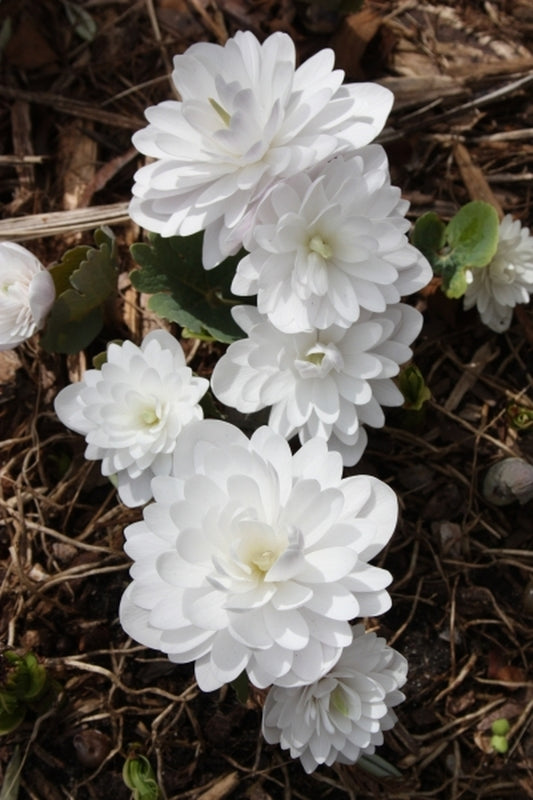In the garden, Sanguinaria is a charming woodland plant with short-lived, beautiful, white flowers in spring followed by grey-green leaves. The flowers are attractive to butterflies.
-
Sanguinaria canadensis 'Multiplex'
Item #: 2688
Zones: 4a to 8b
Dormancy: Winter, Summer, Fall
Height: 6" tall
Culture: Light Shade to Shade
Origin: United States
Pot Size: 3.5" pot (24 fl. oz/0.7 L)
Regular price $33.00Regular priceUnit price per
More Information About Sanguinaria
Sanguinaria is a North American monotypic (one species) genus whose lone species is Sanguinaria canadensis. These woodland perennials are related to poppies and have the common name bloodroot which comes from the red sap that oozes from the cut roots. This sap was used as a source of red dye by Native American basketmakers.
Sanguinaria roots also have another "bloody" reputation. They produce a toxic, caustic substance called sanguinarine that can kill if ingested or destroy tissue if rubbed onto the skin (escharotic). Mental note, don't eat the roots or rub them onto the skin.
Tips for Growing Sanguinaria (Bloodroot)
In the garden, Sanguinaria is a charming woodland plant with short-lived, beautiful, white flowers in spring followed by grey-green leaves. The flowers are attractive to butterflies. Sanguinaria prefers shade, humus-rich, well-drained soil, and consistent moisture. When it is happy, it will spread via compact rhizomes to form a small colony. Sanguinaria avoids the heat of summer by going dormant as the dog days approach and will stay dormant until the following spring. When you're ready to buy sanguinaria (bloodroot) for your perennial garden, we hope you'll check out our online list of sanguinaria for sale. It is worth noting that Sanguinaria is a North Carolina native plant.
Sanguinaria populations are declining in the wild, primarily due to over-harvesting. You can do your part to protect this species by purchasing only nursery-propagated Sanguinaria and not wild-collected plants.
Check out our time lapse video of Sanguinaria flowering in the greenhouse


